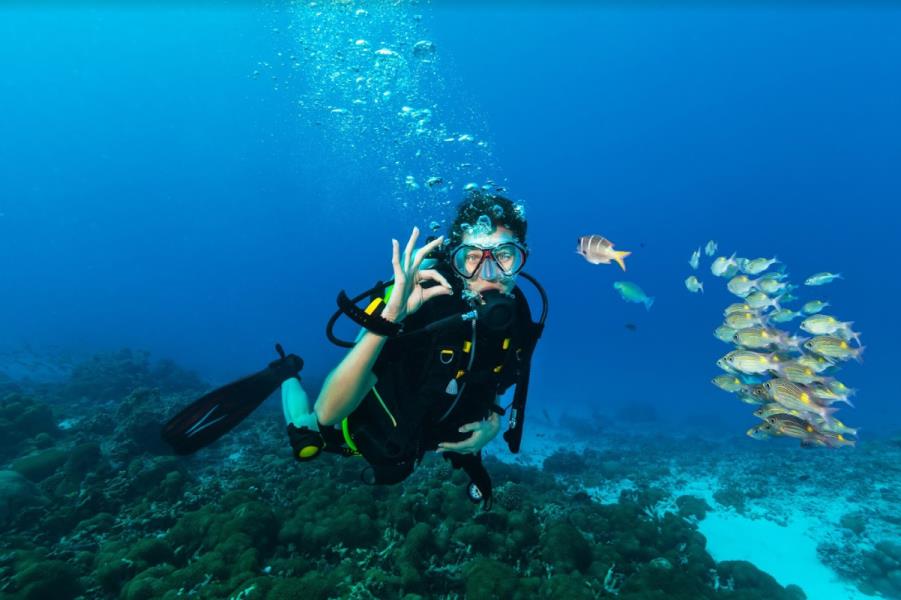🌍 How to Test the Safety of your Underwater Equipment

(Sportalsub.net)
Going for scuba diving is one of the most popular underwater activities that you can experience in your life. But, just like any other outdoor activity, scuba diving requires a lot of preparation, physical skills, and technical training. More importantly, you need to check the safety of your diving equipment. After all, your underwater gear serves as your life support. Having it thoroughly tested can guarantee you a safe and enjoyable underwater experience in the best diving places in the world.
So, if you want a safe and comfortable dive, here’s how you can test the safety of your underwater equipment.
Check Your Wet Suit
Wetsuits aren’t just diving apparel because they have an essential function during your scuba diving activity. Since they’re usually made from neoprene, they provide adequate warmth to your body while underwater. Wetsuits trap a thin layer of water between the suit and the body. Your body warms the water and you retain the heat when you’re underwater.
Due to this essential function, it’s best to check and test your wetsuit before going for a dive. For instance, fit the wetsuit and start looking for tears, rips, and other defects. Also, inspect the zippers and determine if they’re working correctly. By doing so, you can be safe from the possible changes in water temperature at different depths, which can potentially put you at risk in the water.
Inspect The Regulator, Gauges, And The Tank
You must check the regulator, gauges, and the tank before diving. Below are the things you must know about them and to understand how to test their safety:
- Regulator – It’s the part that lets you breathe under the water. It’s attached to the tank with a hose that connects it to a mouthpiece, making it easy for you to inhale air underwater. To verify its safety, start looking at the hoses and O-rings. Make sure they’re intact and without defects. Then, inspect the inlet screen for potential discoloration or debris.
- Pressure gauge – A pressure gauge is connected to your tank and is used to determine how much air is left in your tank while diving. For this equipment, conduct a test breathing operation to know if it’s safe to use.
- Tank – It’s the storage of air that’s used by a diver to breathe underwater. It contains 21% oxygen, 78% nitrogen, and some other gases. If you want to determine the safety of the air you breathe in the tank, doing a compressed air testing can be an excellent idea. Compressed air testing refers to a process of knowing whether the air used in scuba diving is without impurities that might be hazardous to your health while you’re underwater.
Look At The Buoyancy Compensator
When it comes to diving, a buoyancy compensator (BCD) refers to a vest-like fitted jacket where the tank is attached and worn by the diver. It lets you control your depth in the water and the weight of all the equipment you use.
To know if your buoyancy compensator is in good working condition and is safe to use, inspect the clips, D-rings on the straps, and the releases. Also, check the inflator, including the security of the connections. Lastly, examine the integrity of the bladder and the operation of the relief valve.
Ensure The Safety Of The Weight Belt
For scuba diving, you should use a functional weight belt during the entire activity. Scuba divers wear the belt around their waist to ensure proper descent and safe stay underwater while diving. In most cases, the weight required varies from one person to another, depending on the individual’s natural buoyancy and body fat.
On the other hand, verifying the weight belt’s safety is also crucial to the overall success of your diving activity. First, figure out the amount of weight you need for the dive. Second, check whether the releases function properly and test the quality of stitching on the belt.
Check The Mask, Snorkel And The Fins
It’s also vital to inspect the mask, snorkel, and the fins you’re going to use during your diving activity. Here’s what you need to know about these pieces of underwater equipment:
- Mask – This can help keep water out of your eyes while giving you a clear view of the under water’s hidden beauty. It’s an essential gear because it comes with an air pocket that balances your ears when descending. To ensure that it’s safe, you should examine the mask skirt and ensure it doesn’t have damages.
- Snorkel – A snorkel is helpful when you breathe before descending. When you use it, you don’t need to use the air in your tank. To know if your snorkel is safe and in good condition, check the integrity of the bite tabs.
- Fins – They’re used as a way of moving effortlessly underwater. Because of this, it’s essential to examine the fins’ straps and make sure they’re free from any defects.
Bottom Line
Indeed, preparing for your first scuba dive is a must for safety reasons. Before you head to a deep-water adventure, it’s best to conduct an equipment check to ensure their safety and integrity.
Keep the above tips in mind, and you’ll surely have a fun and risk-free diving experience to cherish for a lifetime.

Last Updated on June 26, 2020

